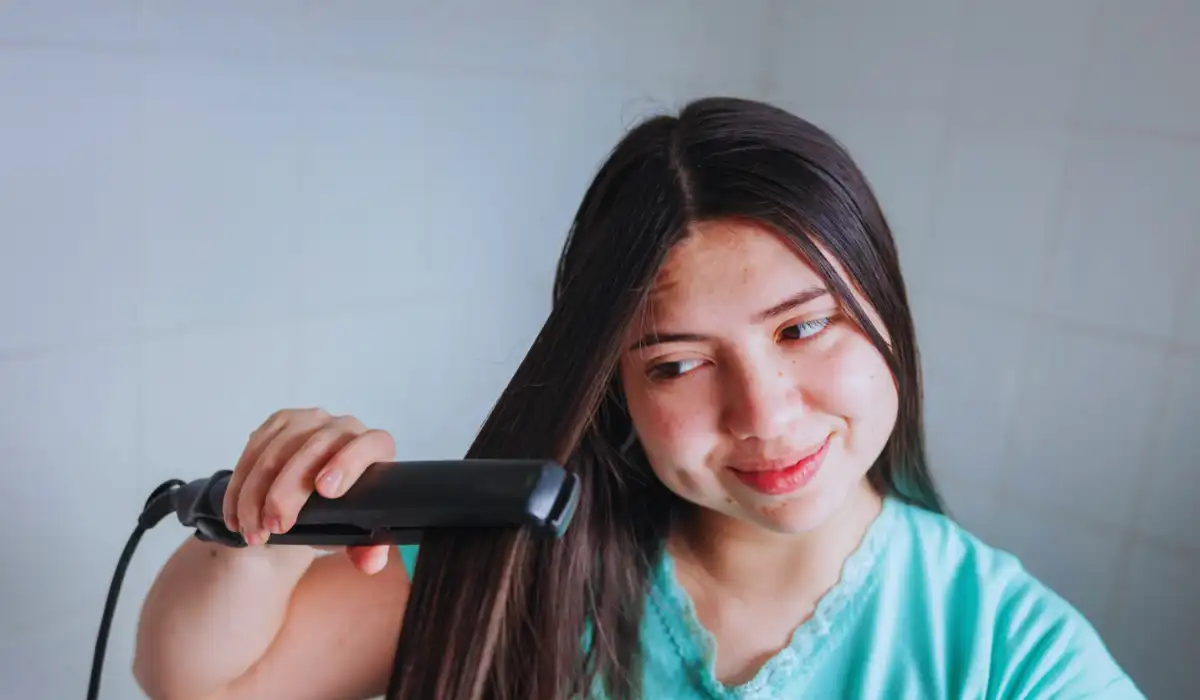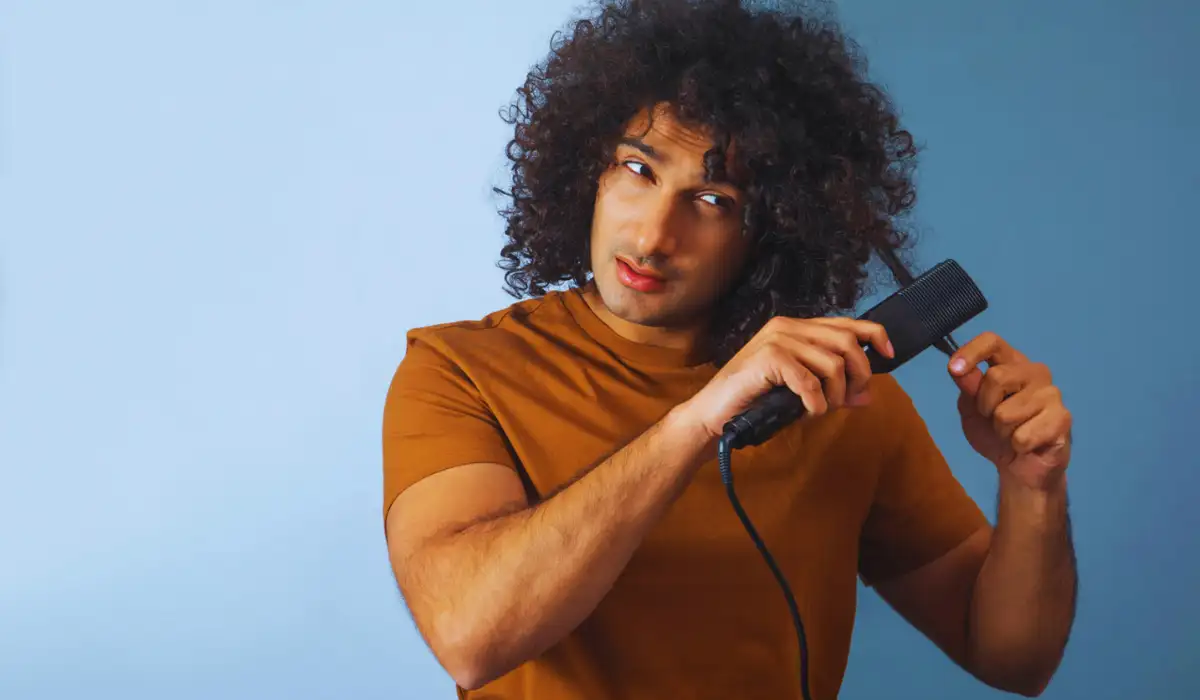Hair straightening is a very popular hair styling technique, which allows you to achieve smooth, shiny, and silky hair. Whether you have curly, wavy, or frizzy hair, straightening is a practical and easy option for changing your look.
However, to achieve optimal results it is important to know the tips and secrets of the experts.
Indeed, successful straightening is not just a matter of running a straightener over your hair, you must prepare your hair well before straightening, choose the right tools and products, use the right straightening techniques, and maintain your training so that it lasts longer.
In this article, we will share with you the 6 essential tips you need to know before using a straightener
Choosing the right tools
How to select the perfect straightener for your hair. The choice of straightener is crucial to obtain perfect straightening.
It is important to choose the right straightener suited to your hair to avoid damage and achieve a professional result.
Additionally, there are a lot of straighteners on the market. To make the right choice, the easiest way is to seek advice from a professional.
Your hairdresser, for example, knows you, he has already done your hair at least once, and he is used to handling stylers.
It will help you choose the right type of straightener according to your hair type and length.

The type of plate
The type of plate is an important consideration when choosing a straightener. There are two types of plates: ceramic plates and titanium plates.
Ceramic plates are recommended for fine and fragile hair, as they heat more evenly and prevent burns.
Titanium plates, on the other hand, are ideal for thick and resistant hair, as they heat up more quickly and allow faster straightening.
Temperature
Temperature is another important criterion when choosing a straightener. Straighteners offer a wide temperature range from 100 to 230 degrees.
For fine and fragile hair, a temperature of 150 to 180 degrees is sufficient, while for thick and resistant hair, a higher temperature is necessary
The size of the plates
The size of the plate is another important element to consider. Straighteners with wider plates are recommended for thick long hair, while straighteners with narrower plates are better for thin, short hair.
The shine, good condition of your hair, and perfect shine depend on it, the three main materials that make up the coating of the plate are ceramic: it is removed for diffusing heat gently and evenly.
In addition, it makes it easier to slide the device along the entire length of the wick. Curly and very dry hair love it. Ceramics can be white, yellow, or black, all have the same Properties.
Additional features
Some straighteners come equipped with additional features, such as floating plates to adapt to the shape of the hair strand, a temperature lock function to prevent accidental temperature changes and a steam function to moisturize the hair for smoothing.
These additional features can make straightening easier and more effective
The brand
The brand is also an element to take into account. It is important to choose a reputable and reliable brand, as this ensures product quality and safety of use.
To choose the ideal straightener for your hair, you need to consider the plate types, temperature, plate size, additional features, and brand.
By choosing a straightener suited to your hair, you will achieve professional results and protect your hair from heat damage.
How To Wash Your Hair?
The first step to preparing your hair for straightening is to wash it.
Use a mild moisturizing shampoo to remove impurities and hair product residue. Rinse your hair well with lukewarm water to avoid damaging the hair fiber. Below are some tips:
Use conditioner or a hair mask
After shampooing, it is important to use a conditioner or hair mask to moisturize and nourish your hair. Straight hair tends to be drier than curly or wavy hair, so it’s important to moisturize it deeply.
Dry your hair
After washing your hair, it is essential to dry it properly. If you use a hair dryer, be sure to set the temperature to medium or low to avoid damaging your hair. If possible, let your hair air dry naturally.
Detangle Your Hair
Before you start straightening your hair, it is important to detangle it thoroughly to avoid knots and tangles.
Use a wide-toothed comb or a special brush for straight hair to gently detangle your hair. Your choice of straightener will need your detangled hair for smooth application.
Protect your hair with a thermal protection product
Before using the straightener, it is important to apply a heat protection product to protect your hair from the heat of the straightener. These products contain ingredients that form a protective barrier around the hair to prevent it from drying out and breaking from heat.
Essential steps for optimal results
Whether you are new to straightening or are already regular, stated tips will help greatly when considered before choosing your straightener.
Whether you are in a hurry or you have plenty of time, the result of your hair care is something to consider.
Prepare the hair properly before straightening, the success of perfect straightening depends largely on the preparation of the hair before straightening.
Indeed, it is recommended you choose a hair straightener whose plates are entirely made of ceramic.
It will be of better quality, and its virtues will be preserved longer while helping to give your hair the needed aesthetic quality.
Finally, if your hair is not prepared correctly, you risk obtaining an unsatisfactory result, or even damaging your hair.
To take care of your hair after straightening, avoid touching your hair, wait at least 24 hours before washing it, use products suitable for the maintenance of straightened hair, avoid heat sources, brush your hair regularly, and use moisturizing hair treatments.
By following these simple tips, you will maintain the straightening effect of your hair and protect it from damage.
Conclusion
In conclusion, mastering the art of straightener use involves key considerations. Prioritize heat protection by selecting the right temperature, opting for quality heat protectants, and embracing regular breaks to prevent heat damage.
Understanding your hair type and its needs allows tailored care, from proper sectioning techniques to using the appropriate straightener width.
Embrace a cautious approach by starting with lower heat settings and gradually increasing them as needed. Prioritizing hair health through nourishing treatments and avoiding excessive heat exposure ensures long-term vibrancy.
Remember, these six essential tips—temperature control, protection, hair awareness, cautious usage, tailored approach, and health priority—are your guide to flawless, damage-free styling.

